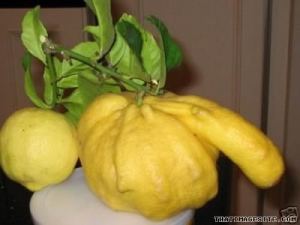

 Squash need a good climate, relatively dry, or warm climate for better growth of the plants. It should have an optimum temperature of 30-C.
Squash need a good climate, relatively dry, or warm climate for better growth of the plants. It should have an optimum temperature of 30-C.
Squash can be grown in any types of soil. It is best suited in a sandy loam soil. It should be well-drained free from population of nematodes and bacterial wilt. It is important to select a suitable place to start planting.
Squash can grow in a less cultivated plant. Plow and harrow the field 3 times to remove all existing weeds and new germinated seeds that may affect the growth of the plant later on. This is also to soften the soil, friable and have a good soil composition. Harrow it crosswise twice to assure that emerging weeds is completely remove.
Make furrows of 16 centimeters deep to provide a drainage canal to control waterlogged areas.
Squash can be raised either by transplanting or direct seeding. Most recommended time to plant is during rainy season. Plant seeds in a mound or raised hill. During dry season, plant the seeds on depression when preparing the land. Sow seeds 2-3 pieces per hill. Any weak and disease plants should be remove to be done 3-4 weeks of emergence. It is best if only one healthy plants is raised per hill for fast growth.
If raised by transplanting, prepare a seedbed. Make sure that the soil in the seedbed is fertile, friable with sand as compost.
Transplant the seedling to the thoroughly prepared field. Transfer it 2 weeks after sowing when leaves already develop fully. Harden the seedling by slowly decreasing watering quantity. Expose them to the heat of the sun to reduce shocks during the transplanting to have a good seedling stand. It can also promote better survival of the plant after transplanting. Press the soil gently around the plants’ root. Water it immediately and regularly for 1 week until they are fully established.
The spacing should be 3 meters x 3 meters between plants and rows if planted during wet season. If planted in dry season, the spacing should be 2.5 meters x 3 meters.
Mix animal manure and compost to that of the soil at the rate of 2 kilograms per hill with complete fertilizer (14-14-14) at the rate of 10 grams per hill during planting the seedling. Side-dress with urea 1/2 tablespoon per plant, a month after planting. You have to sidedress it with potash, 1 tablespoon per plant after last cultivation or 2 weeks after the first sidedressing. Side-dress with urea and potash every 15 days.
Mulch surface of the ground to conserve moisture and weeds control during dry season. During wet season, it controls erosion of fertile top soils. It also protect the fruits away from the ground to avoid being damage. Use rice straw or rice hull, cogon grass or bagasse.
Water the plants during its growing period. Apply water by using furrow irrigation.
Spray the plants under designated schedule of application to control pests and diseases at the early stage especially during growing, flowering and fruiting stages.
Strict sanitation habit can prevent insect population and disease infestation. Remove all weeds that will affect the life of the plant. Use hand weeding to protect the crawling vines. It can be done by hilling-up inter-row cultivation. Avoid deep cultivation to protect the root. Minimize application of insecticides during flowering stage to avoid killing insect pollinators that make the flowers into fruits.
Harvest fruits when fully ripe or the peduncles is dried up. Cut the fruits with sharp knife leaving a little portion of stem near the fruits.
Squash can ber stored sufficient or longer time in a dry environment because of its thick rind. Avoid storing bruise fruits. It will start rotting when stored a longer period of time while waiting for a good price in the market.